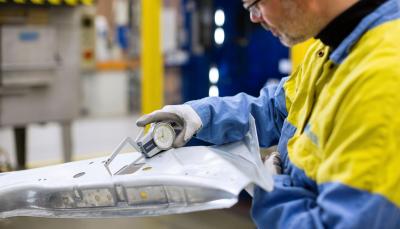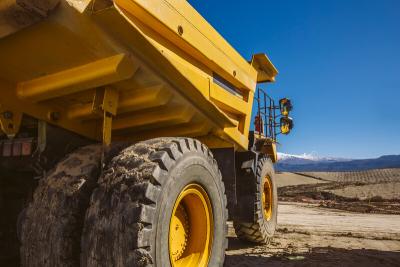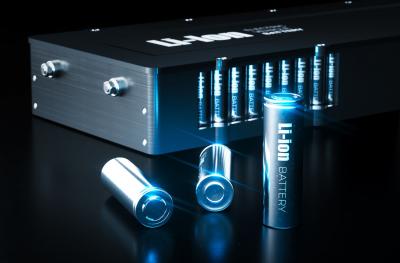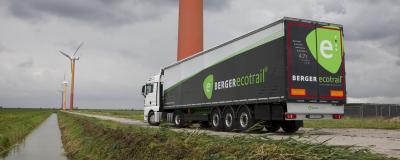EN-Products-and-Services-Automotive-HUB TSE
Discover high-performance automotive steel solutions designed for strength, safety, and efficiency.

<a href=/products/automotive/electro-plated-steel>Tata Steel is a committed partner within the automotive industry. Combining ourmaterials, design eng...</a>

<a href=/products/automotive/metallic-coated>Tata Steel offers a wide choice of metallic coated steel for inner and outer panels. Our product ran...</a>

<a href=/products/construction>Taking a proactive approach, we are unique in sharing our deep knowledge of steel, advising on how t...</a>

<a href=/products/engineering/metallic-coated>Tata Steel offers a wide choice of metallic coated steel.</a>

<a href=/products/plating/electro-plated>At Tata Steel Plating we work closely with our customers to find cost-effective solutions to technic</a>

<a href=/product-ranges/tubes/structural-tubes>Cold formed welded steel structural hollow sections supplied to EN10219.Produced with precision and ...</a>

<a href=/brands/automotive/hilumin>HILUMIN®for cylindrical battery cell casings in electric vehicles.</a>

<a href=/brands/automotive/hi-lite>Hi-Lite:a thin non-oriented electrical steel for efficient and high-performance electric motors.</a>

<a href=/brands/automotive/hyperform>Hyperform®: extra formability for lightweight AHSS design.Tackling weight, costs and performance si</a>

<a href=/brands/automotive/magizinc-auto>MagiZinc®Auto: advanced hot-dip galvanisedcoating for inner parts and outer panels.</a>

<a href=/brands/automotive/plt>Prime Lubrication Treatment:advanced surface treatment for smooth processing of automotive panels.</a>

<a href=/brands/automotive/serica-flo>Serica FLO® :a premium surface finish for a market-leading paint appearance.</a>

<a href=/brands/automotive/xpf>XPF® for easy lightweighting and improved energy absorption in complex structural vehicle parts.</a>

<a href=/brands/automotive>Key products in the Automotive product portfolio
</a>

<a href=/brands/engineering/magizinc>MagiZincis an innovative replacement for conventional galvanised steels. It provides superior corros...</a>

<a href=/brands/engineering/valast>Valast® wear resistant steel is developed to withstand the most demanding conditions. Discover how ...</a>

<a href=/products/engineering/direct-rolled/high-strength-steel>Ymagine® direct-rolled steel comes in five high-strength, low-alloy (HSLA) grades offering either w...</a>

<a href=/brands/engineering/ympress>Ympressis a hot-rolled, high-strength, low-alloy steel with outstanding formability and consistent p...</a>

<a href=/brands/engineering/ympress-laser>Tailor-made for efficient, high-speed laser cutting, this homogeneous, hot-rolled steel combines exc...</a>

<a href=/brands/engineering/ymvit>Tata Steel’s Ymvit cold-rolled steel for enamelling delivers end product and process benefits incl...</a>

<a href=/brands/engineering>Discover our engineering brands for various applications in the heavy vehicles sector, solar constru...</a>

<a href=/applications/automotive/energy-storage>Enabling the transition to electrified vehicles by providing solutions for cylindrical battery casin</a>

<a href=/applications/automotive/body-in-white>Supporting you from concept to series production. Increased energy absorption in BIW parts, reducing...</a>

<a href=/expertise/automotive/applications/chassis-and-suspension>Helping you strike the balance in chassis design.</a>

<a href=/automotive/applications/outer-panels>Tata Steel’s outer panel steels meet the demands of modern sustainable vehicle design, shaping the...</a>

<a href=/applications/engineering>Steel applications for construction equipment, consumer products, industrial applications, steel pro...</a>

<a href=/expertise/engineering/case-studies/bergerecotrail>Using Ympress® S700MC to manufacture BERGERecotrail® semi-trailer bodies and welded-frames for the...</a>

<a href=/expertise/engineering/case-studies/frank-original-boron-manganese>Expansion of boron manganese steel offering for agricultural machinery in partnership with Frank Wal...</a>

<a href=/expertise/engineering/case-studies/hyster-yale>Opportunities for Hyster Yale to deliver lower total cost of ownership to its customers.</a>

<a href=/expertise/engineering/case-studies/jcb-landpower>EnablingJCB to develop an optimally-designed next-generation tractor.</a>

<a href=/expertise/engineering/case-studies/kuhn-gyrotedders>KUHN co-developed a newhollow section specification:Hybox TT.</a>

<a href=/expertise/engineering/case-studies/linssen-yachts>S235 steel products create ultra-smooth hulls for Linssen Yachts.</a>

<a href=/expertise/engineering/case-studies/palfinger>Crane maker Palfinger benefits from a unique partnership.</a>

<a href=/applications/engineering-case-studies>We can make a real difference to your performance by understanding your business and delivering stee...</a>

<a href=/applications/engineering-case-studies>We can make a real difference to your performance by understanding your business and delivering stee...</a>

<a href=/applications/engineering-case-studies>We can make a real difference to your performance by understanding your business and delivering stee...</a>

<a href=/applications/engineering-case-studies>We can make a real difference to your performance by understanding your business and delivering stee...</a>

<a href=/applications/engineering-case-studies>We can make a real difference to your performance by understanding your business and delivering stee...</a>

<a href=/applications/engineering-case-studies>We can make a real difference to your performance by understanding your business and delivering stee...</a>

<a href=/applications/packaging>Our packaging steel products are designedfor a diverse range ofapplications from aerosols to food ca...</a>

<a href=/expertise/packaging/case-studies/bonduelle>Two thirds of Dutch consumers didn'tknow that a can is endlessly recyclable according to consumer re...</a>

<a href=/applications/packaging/case-studies/snert>Joris Bijdendijk is a renowned Dutch chef at the Michelin-starred RIJKS restaurant, located next to ...</a>

<a href=/expertise/packaging/case-studies/calvo-vuelca-facil>Consumers, from older users to children can sometimes find traditional tuna cans difficult to use du...</a>

<a href=/applications/packaging-case-studies>We can make a real difference to your performance by understanding your business and delivering stee...</a>
In Dutch they say: “Schoenmaker blijf bij je leest”, which basically means “why don’t you focus on what you know best, and let other people worry about things you know nothing about.” But the latter is not true. World Auto Steel (WAS) has a track record of successfully designing vehicles that already started in 1998 with ULSAB (Ultralight Steel Auto Body), which was followed up by FSV (Future Steel Vehicle) in 2013.
FSV was a fully engineered, steel-intensive design for pure Battery-Electric and Hybrid-Electric vehicles. The FSV design at that time reduced the mass by more than 35 percent compared to a benchmark vehicle, whilst at the same time meeting crash safety and durability requirements. One of the most striking features of FSV were the so-called ‘elephant trunk’ shot gun parts in the front module that ensured superior performance in the full frontal and offset crash simulations. I remember that, at first, automotive engineers that were presented the study, tended to mock this feature a bit. But on second thought it seemed perhaps even a good idea: similar shaped shot guns have been incorporated in multiple modern car models, like the Ford Focus, Ford Mustang Mach-E, Range Rover Sport and Audi e-tron. It shows the power of the WAS vehicle concept studies, which are always supported by world-class engineering firms, and in which the pinnacle of material and automotive engineering come together.
And now there is their latest concept study SEM (Steel E-motive). What can we expect this time? With the SEM concept, WAS has really taken a leap into the future again. Ride-hailing based on safe and sustainable vehicles is the future of mobility and an important way to achieve a Net Zero society. SEM is a safe, comfortable, economic and sustainable vehicle that will drive the shift from car ownership to Mobility as a Service. Just a few facts and figures about the model:
• It features the latest AHSS steel grades with strengths up to 2000 MPa
• The design includes 7 “world’s-first” structural design innovations
• It is the 1st Autonomous Vehicle to meet all global high speed crash requirements, including a ‘glance-off’ performance* in the 25% offset barrier test
• With a weight of 282 kg, it is 25% lighter than the realistic benchmark
• SEM would lower CO2-emissions by 86% over its life-cycle compared to the same benchmark
The bar has been raised for the developers of Autonomous Vehicles. SEM inspires engineers and developers to overcome the challenges posed by AV design. Crash requirements are more difficult to achieve when the front passengers are seated facing rearwards, as their heads will be closer to the wind screen. It is impressive how the SEM engineering team has been able to meet all crash requirements in such a light and sustainable vehicle concept. I am very curious and excited to start the discussion about the concept with our automotive engineering contacts. Which advanced materials and design features will be implemented in real-life vehicles this time?
* In the 25% offset barrier test the vehicle can either bounce off the barrier, or glance past it. The latter results in a much lower impact on the passenger and is seen as the safer option and is enabled by more modern engineering concepts.

Discover high-performance automotive steel solutions designed for strength, safety, and efficiency.